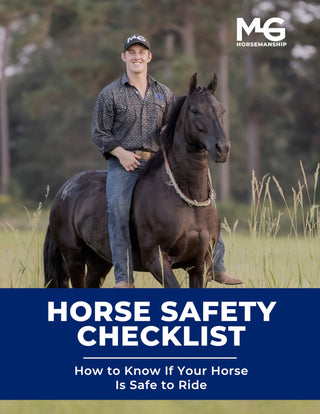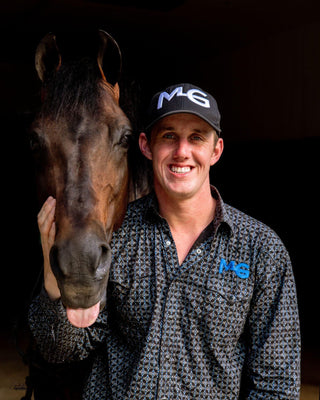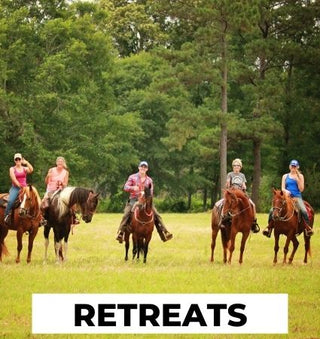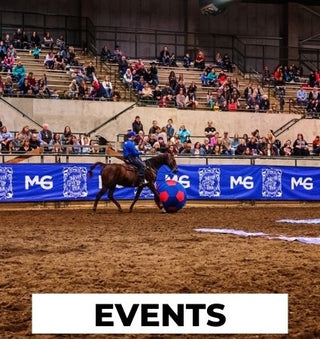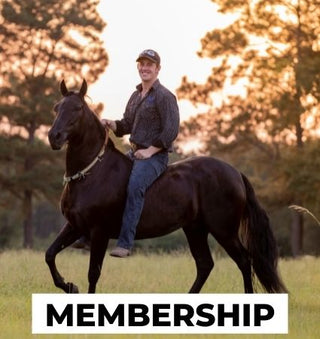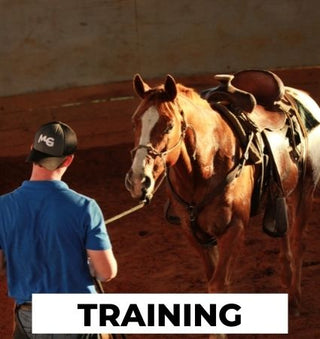This week we are focusing on horse help, and we are all about gaining confidence. There’s nothing more rewarding than giving a second chance to horses and riders.
Alright, let’s get into the horse help Q & A.
Gaiting Issues
Question: “I’m having a problem with my mare gaiting when I don’t ask her. How do I fit this?”
Answer:
It depends on what you’re looking for. If you’re looking for her to walk, and she’s gaiting, and you’re trying to slow her down, it’s all about getting her soft enough to get her head below the saddle. So, showing her how to drop her head. Most people hold their horses up to slow them down, and the antsier the horse gets, the more energy you get. It’s just adding fuel to the fire. It’s about turning that adrenaline pump off, getting her soft, and getting her head down.
To start that process, you have to get them soft and easy and head down to one side and then the other. My favorite exercise for that is spiraling. Spiraling is circling them to the inside, then asking them to be back up crooked. By far, the easiest way to get your horse to drop its head.
Switching From English To Western
Question: What do you recommend for steps? Switching from English to Western, I don’t have a seat at the moment to ride English, so my confidence is not there.
Answer:
If you are switching from English to Western, you will have to sit back on your butt. You’ll have to get comfortable knowing you’re not holding them back to slow them down. In a sense, you’re circling them to slow them down. Once your brain says, “Oh, I don’t have to hold this horse by the face to slow it down and keep it at speed, I can put it on
a loose rein. Anytime it speeds up, I can make my circle smaller, push them in where to push them outward, and use my circles to slow them down and maintain that loose rein.” That’s a big difference.
So English, you’re sitting more upright, you’re seeing forward in the saddle, and you almost need a little contact to stay balanced and confident in your mind. Your Western rider can sit further back on their butt and use their seat for balance versus the horse’s face. You have the understanding that if anything happens, you could pull his face around. That’s what gives you the confidence to sit back. It’s not that Western riders are better or braver than English riders. They simply go on a loose rein.
Cantering With Confidence
Question: Still working on cantering off with confidence. How low should my hands be? I wish I had longer arms!
Answer:
If you’re still working on cantering with confidence, it’s not necessarily that your hands have to stay lower. We don’t want to hold your horse’s face up. Wendy has a Rocky Mountain Horse whose gaited his whole life, and now we are asking him to canter. So, it’s not about how well you drop your hands. It’s just about not giving him the idea of picking up his head. Once he picks up his head, he will want to break out of a canter. Think about not picking his head up instead of keeping your hands down.
Visit our Horse Help page for more help with building your confidence in and out of the saddle.
Training Spins
Question: Can you describe what exactly you’re doing with your outside hand and rein when teaching the spin? How do you keep from getting dizzy?
Answer:
Well, unfortunately, one of those answers is practice. Practice keeps you from getting dizzy. Whenever I’m asking for the spin or step over, and they’re somewhat green, I want to make sure that I opened the doors to the inside and am sitting back into the inside hip because I want that back inside hip to pivot, so one for my weight over the pivot point. Now my outside hand will start closing in, but I do not want to have the horse’s nose tip to the left. I do not want my right hand crossing over their withers. I want it to come up towards their neck and shut down the forward.
So now, when I do this, your horse will try to walk forward. I want you to suck that right hand towards your inside hip, back towards the inside hip of the horse, but not let it cross its neck. What that’s going to do is shut down the forward. I’m always going to rock back on his hindquarters and bump with the outside rain and that outside leg. The second the front inside leg steps forward, you’ll release and ask for it again.
Continue these steps until you get the rotation.
So basically, your outside rein does two things; it keeps the shoulders from leaning the wrong way and shuts down forward motion. You’ll find immediate success in your spins if you do those two things.
Looking for more horse help? Check out the full Q&A video on our YouTube channel.


